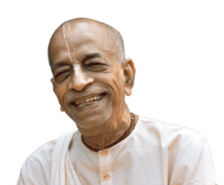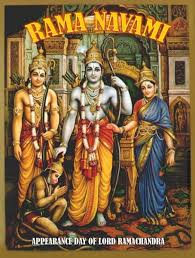
Sri Rama Navami, Sunday, March 25, 2018 [Mayapura, West Bengal, Bharata Bhumi time]
Divine avirbhava tithi (appearance) of Sri Ramacandra Bhagavan
Srila Prabhupada explains the amazing story of Sri Mula rama
compiled by Yasoda nandana dasa 
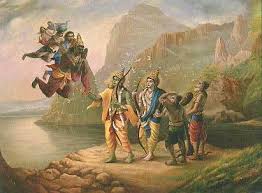
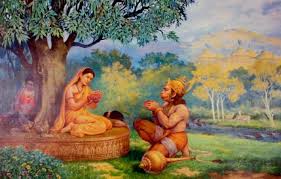
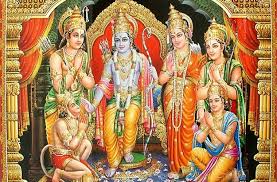

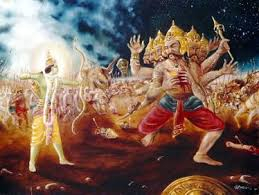
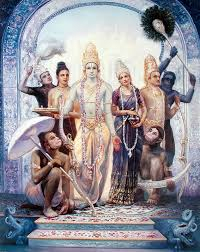 w
w In the book known as Adhyātma-rāmāyaṇa, there are statements in Chapters Twelve to Fifteen about the worship of the Deities Śrī Rāmacandra and Sītā. There it is stated that during Lord Rāmacandra’s time there was a brāhmaṇa who took a vow to fast until he saw Lord Rāmacandra. Sometimes, due to business, Lord Rāmacandra was absent from His capital for a full week and could not be seen by citizens during that time. Because of his vow, the brāhmaṇa could not take even a drop of water during that week. Later, after eight or nine days, when the brāhmaṇa could see Lord Rāmacandra personally, he would break his fast. Upon observing the brāhmaṇa’s rigid vow, Lord Śrī Rāmacandra ordered His younger brother Lakṣmaṇa to deliver a pair of Sītā-Rāma Deities to the brāhmaṇa. The brāhmaṇa received the Deities from Śrī Lakṣmaṇajī and worshiped Them faithfully as long as he lived. At the time of his death, he delivered the Deities to Śrī Hanumānjī, who, for many years, hung Them around his neck and served Them with all devotion. After many years, when Hanumānjī departed on the hill known as Gandha-mādana, he delivered the Deities to Bhīmasena, one of the Pāṇḍavas, and Bhīmasena brought Them to his palace, where he kept Them very carefully. The last king of the Pāṇḍavas, Kṣemakānta, worshiped the Deities in that palace. Later, the same Deities were kept in the custody of the kings of Orissa known as Gajapatis. One of the ācāryas, known as Narahari Tīrtha, who was in the disciplic succession of Madhvācārya, received these Deities from the King of Orissa.
In the book known as Adhyātma-rāmāyaṇa, there are statements in Chapters Twelve to Fifteen about the worship of the Deities Śrī Rāmacandra and Sītā. There it is stated that during Lord Rāmacandra’s time there was a brāhmaṇa who took a vow to fast until he saw Lord Rāmacandra. Sometimes, due to business, Lord Rāmacandra was absent from His capital for a full week and could not be seen by citizens during that time. Because of his vow, the brāhmaṇa could not take even a drop of water during that week. Later, after eight or nine days, when the brāhmaṇa could see Lord Rāmacandra personally, he would break his fast. Upon observing the brāhmaṇa’s rigid vow, Lord Śrī Rāmacandra ordered His younger brother Lakṣmaṇa to deliver a pair of Sītā-Rāma Deities to the brāhmaṇa. The brāhmaṇa received the Deities from Śrī Lakṣmaṇajī and worshiped Them faithfully as long as he lived. At the time of his death, he delivered the Deities to Śrī Hanumānjī, who, for many years, hung Them around his neck and served Them with all devotion. After many years, when Hanumānjī departed on the hill known as Gandha-mādana, he delivered the Deities to Bhīmasena, one of the Pāṇḍavas, and Bhīmasena brought Them to his palace, where he kept Them very carefully. The last king of the Pāṇḍavas, Kṣemakānta, worshiped the Deities in that palace. Later, the same Deities were kept in the custody of the kings of Orissa known as Gajapatis. One of the ācāryas, known as Narahari Tīrtha, who was in the disciplic succession of Madhvācārya, received these Deities from the King of Orissa.
It may be noted that these particular Deities of Rāma and Sītā have been worshiped from the time of King Ikṣvāku. Indeed, they were worshiped by the royal princes even before the appearance of Lord Rāmacandra. Later, during Lord Rāmacandra’s presence, the Deities were worshiped by Lakṣmaṇa. It is said that just three months before his disappearance, Śrī Madhvācārya received these Deities and installed them in the Uḍupī temple. Since then the Deities have been worshiped by the Madhvācārya-sampradāya at that monastery. As far as the Śrī Vaiṣṇavas are concerned, beginning with Rāmānujācārya, they also worshiped Deities of Sītā-Rāma. Sītā-Rāma Deities are also being worshiped in Tirupati and other places. From the Śrī Rāmānuja-sampradāya there is another branch known as Rāmānandī or Rāmāt, and the followers of that branch also worship Deities of Sītā-Rāma very rigidly. The Rāmānuja-sampradāya Vaiṣṇavas prefer the worship of Lord Rāmacandra to that of Rādhā-Kṛṣṇa
Books : Sri Caitanya-caritamrta – 1975 Edition : Cc. Madhya-lila : Madhya 9: Lord Sri Caitanya Mahaprabhu’s Travels to the Holy Places : Madhya 9.11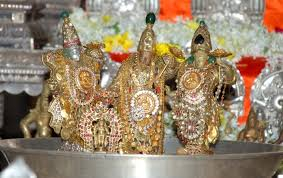
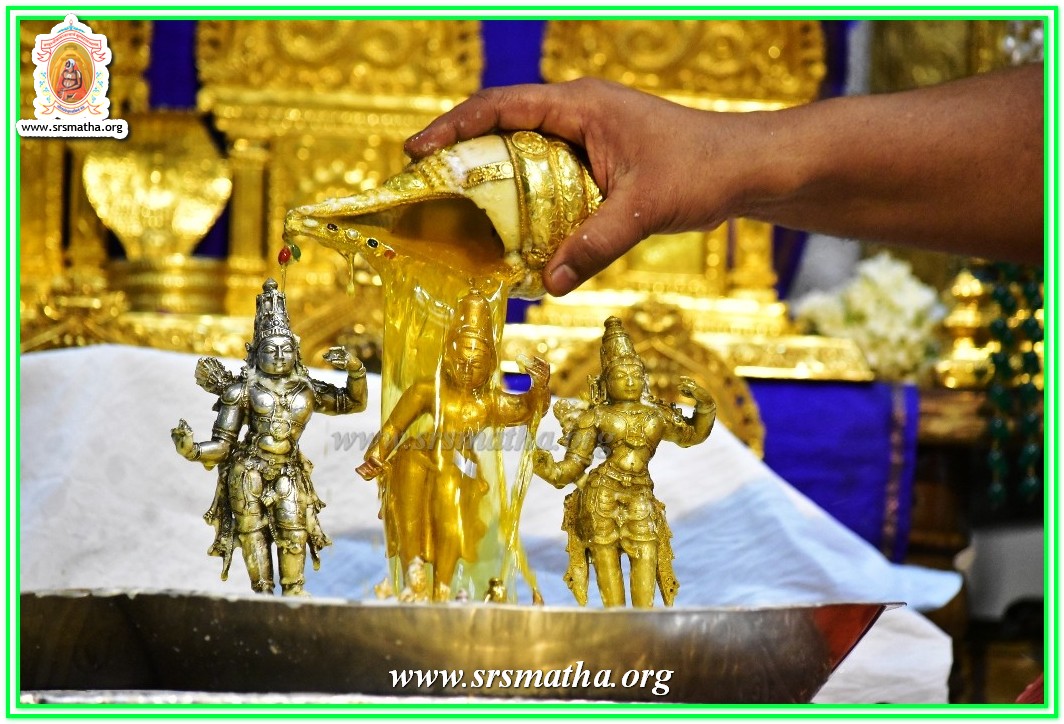
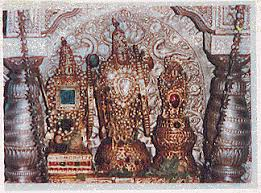






 w
w In the book known as Adhyātma-rāmāyaṇa, there are statements in Chapters Twelve to Fifteen about the worship of the Deities Śrī Rāmacandra and Sītā. There it is stated that during Lord Rāmacandra’s time there was a brāhmaṇa who took a vow to fast until he saw Lord Rāmacandra. Sometimes, due to business, Lord Rāmacandra was absent from His capital for a full week and could not be seen by citizens during that time. Because of his vow, the brāhmaṇa could not take even a drop of water during that week. Later, after eight or nine days, when the brāhmaṇa could see Lord Rāmacandra personally, he would break his fast. Upon observing the brāhmaṇa’s rigid vow, Lord Śrī Rāmacandra ordered His younger brother Lakṣmaṇa to deliver a pair of Sītā-Rāma Deities to the brāhmaṇa. The brāhmaṇa received the Deities from Śrī Lakṣmaṇajī and worshiped Them faithfully as long as he lived. At the time of his death, he delivered the Deities to Śrī Hanumānjī, who, for many years, hung Them around his neck and served Them with all devotion. After many years, when Hanumānjī departed on the hill known as Gandha-mādana, he delivered the Deities to Bhīmasena, one of the Pāṇḍavas, and Bhīmasena brought Them to his palace, where he kept Them very carefully. The last king of the Pāṇḍavas, Kṣemakānta, worshiped the Deities in that palace. Later, the same Deities were kept in the custody of the kings of Orissa known as Gajapatis. One of the ācāryas, known as Narahari Tīrtha, who was in the disciplic succession of Madhvācārya, received these Deities from the King of Orissa.
In the book known as Adhyātma-rāmāyaṇa, there are statements in Chapters Twelve to Fifteen about the worship of the Deities Śrī Rāmacandra and Sītā. There it is stated that during Lord Rāmacandra’s time there was a brāhmaṇa who took a vow to fast until he saw Lord Rāmacandra. Sometimes, due to business, Lord Rāmacandra was absent from His capital for a full week and could not be seen by citizens during that time. Because of his vow, the brāhmaṇa could not take even a drop of water during that week. Later, after eight or nine days, when the brāhmaṇa could see Lord Rāmacandra personally, he would break his fast. Upon observing the brāhmaṇa’s rigid vow, Lord Śrī Rāmacandra ordered His younger brother Lakṣmaṇa to deliver a pair of Sītā-Rāma Deities to the brāhmaṇa. The brāhmaṇa received the Deities from Śrī Lakṣmaṇajī and worshiped Them faithfully as long as he lived. At the time of his death, he delivered the Deities to Śrī Hanumānjī, who, for many years, hung Them around his neck and served Them with all devotion. After many years, when Hanumānjī departed on the hill known as Gandha-mādana, he delivered the Deities to Bhīmasena, one of the Pāṇḍavas, and Bhīmasena brought Them to his palace, where he kept Them very carefully. The last king of the Pāṇḍavas, Kṣemakānta, worshiped the Deities in that palace. Later, the same Deities were kept in the custody of the kings of Orissa known as Gajapatis. One of the ācāryas, known as Narahari Tīrtha, who was in the disciplic succession of Madhvācārya, received these Deities from the King of Orissa.It may be noted that these particular Deities of Rāma and Sītā have been worshiped from the time of King Ikṣvāku. Indeed, they were worshiped by the royal princes even before the appearance of Lord Rāmacandra. Later, during Lord Rāmacandra’s presence, the Deities were worshiped by Lakṣmaṇa. It is said that just three months before his disappearance, Śrī Madhvācārya received these Deities and installed them in the Uḍupī temple. Since then the Deities have been worshiped by the Madhvācārya-sampradāya at that monastery. As far as the Śrī Vaiṣṇavas are concerned, beginning with Rāmānujācārya, they also worshiped Deities of Sītā-Rāma. Sītā-Rāma Deities are also being worshiped in Tirupati and other places. From the Śrī Rāmānuja-sampradāya there is another branch known as Rāmānandī or Rāmāt, and the followers of that branch also worship Deities of Sītā-Rāma very rigidly. The Rāmānuja-sampradāya Vaiṣṇavas prefer the worship of Lord Rāmacandra to that of Rādhā-Kṛṣṇa
Books : Sri Caitanya-caritamrta – 1975 Edition : Cc. Madhya-lila : Madhya 9: Lord Sri Caitanya Mahaprabhu’s Travels to the Holy Places : Madhya 9.11



